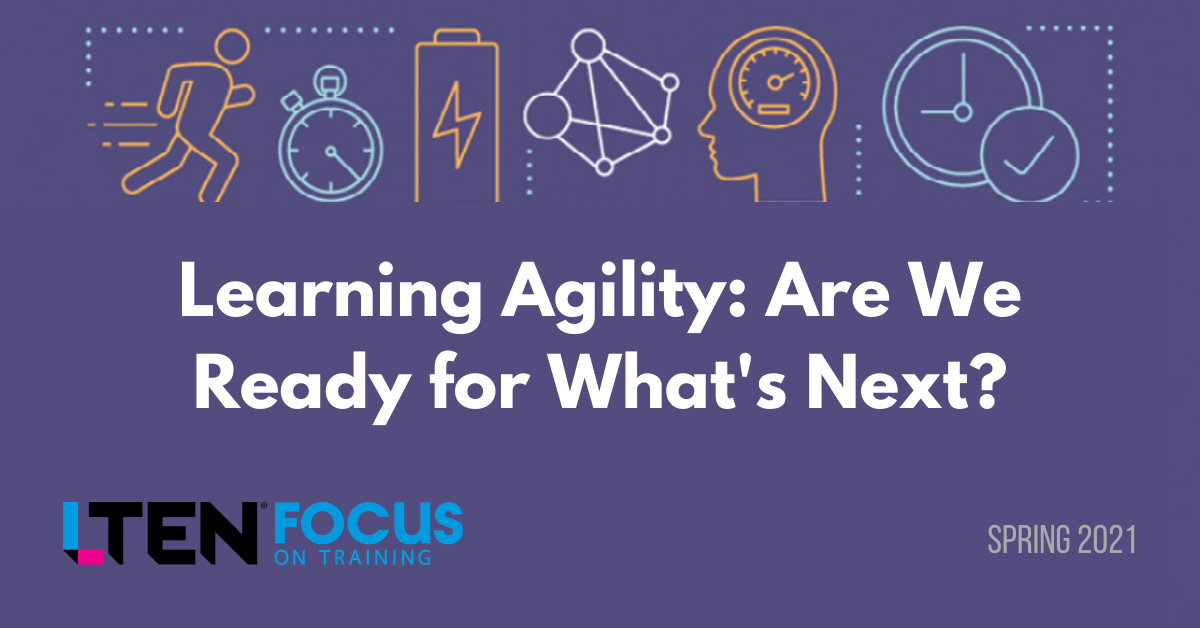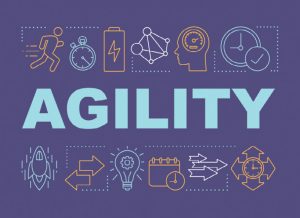
Learning Agility: Are We Ready for What’s Next?
FROM THE PRESIDENT – Richard Sampson
It’s incumbent on us as learning professionals to be ready to pivot and turn on
demand.
 In case you missed it in all the craziness that was 2020, we’ve just gone through what could only be described as a “learning experience.” When everything goes haywire, when there’s intense pressures for change, when the old normal demands a new normal, you can be sure you’re in the midst of a golden opportunity to learn (and grow).
In case you missed it in all the craziness that was 2020, we’ve just gone through what could only be described as a “learning experience.” When everything goes haywire, when there’s intense pressures for change, when the old normal demands a new normal, you can be sure you’re in the midst of a golden opportunity to learn (and grow).
Don’t worry — I’m not going to rehash the lessons of 2020, which we all already know. I just bring it up as an example of something else we all know: You must (always) be prepared.
I’m talking, of course, about learning agility. Whether you’re faced with a global pandemic or something far more routine — a new launch, a staff shortage, some urgent need landing on your plate — it’s incumbent on us as learning professionals to be ready to pivot and turn on demand.
Think about how often something unexpected comes your way. Without the ability to nimbly meet the pressures of delivery, to perform as we’re expected to perform, things don’t get off the ground. Training is designed to be the skeleton key that opens almost every needed door; it can’t be the rusty lock blocking access.
Normally at this point, I’d continue with the assumption that you’re with me. But this time, I don’t have to assume.
Last year, LTEN extended its partnership with Pennsylvania State University to continue to deliver actionable data about the workforce training industry. In a series of 2020 surveys and interviews, the PSU team connected with LTEN members and training industry professionals around how COVID-19 impacted learning agility.
You can read more about the survey and results in an article in this issue from our
PSU partners, but the bottom line is nearly every organization was affected by the pandemic and quickly (and agilely) shifted as needed. The cautionary tale leads, once again, to innovation.
So now what do we do? We faced the unknown, we adapted as needed and we’re emerging, maybe a little sooty, from the struggle. Now what?
First, we recover. From what I’ve seen, that’s happening naturally, with businesses staying on track and teams at the expected level of busy. Whatever normal means now, we’re well on our way.
Next, then, we stay ready. We’ve had a very effective demonstration on what can go wrong, so we learn and prepare. We stretch our muscles and keep looking for innovative ideas and answers. We remember that things can change in the blink of an eye and we keep agility (always) in mind.
I know that’s easier said than done. We don’t gather our teams in a room and announce we will experience no change until we innovate. Agility, like innovation, is an achievement that isn’t always easy to corral.
That’s where training is fortunate … it’s an industry that attracts the quick-witted.
So much of training is akin to performance: We have scripts to follow to get our
messages out, and we must mix that information with a certain style of delivery to
make it retainable. If that weren’t true, we’d have all been replaced by “how to”
manuals decades ago. But have you ever seen a manual shift completely when the moment demanded?
As we settle into what we all hope is a kinder, gentler 2021, keep the agility we so remarkably demonstrated in mind. Even when we’re faced with normal business situations and routine business pressures, the ability to be nimble is a skill that does training proud.
Richard Sampson is president of the LTEN Board of Directors and head of global
training for Cepheid. Email Richard at richard.sampson@cepheid.com.








